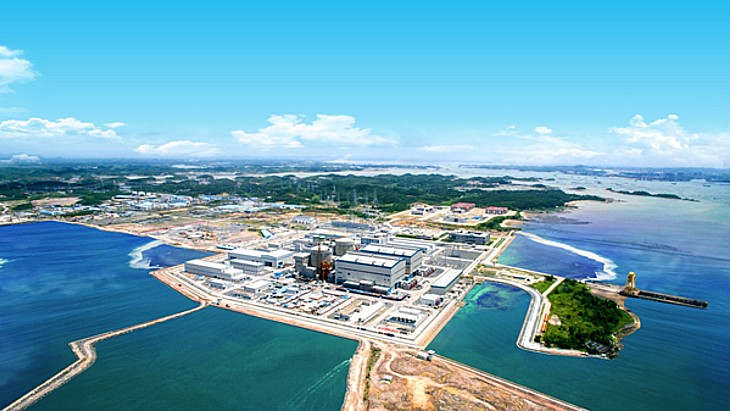Speaking at the Nuclear Industry Association's Nuclear 2018 conference in London, Davies said there is a gap in the UK's nuclear programme following Toshiba's decision last month to withdraw from its nuclear new-build project in the UK and to wind up NuGen.
"The expected sequence of reactors coming online has been interrupted," Davies said. "We will bring forward significantly the date at which we expect the first UK HPR1000 to enter commercial operation. We are confident we can close that gap by bringing Bradwell into operation much sooner. Rescheduling the project, bringing forward COD [commercial operation date], bringing forward FID [final investment decision] and focusing on a target COD of circa 2030."
Under a strategic investment agreement signed in October 2016, CGN agreed to take a 33.5% stake in EDF Energy's Hinkley Point C project in Somerset, as well as jointly develop new nuclear power plants at Sizewell in Suffolk and Bradwell in Essex. The Hinkley Point C and Sizewell C plants will be based on France's EPR reactor technology, while the new plant at Bradwell in Essex will feature the Hualong One design.
As part of that agreement, CGN formed a joint venture company with EDF Energy to seek regulatory approval for a UK version of the Hualong One design.
Last month the UK's Office for Nuclear Regulation and the Environment Agency completed "initial high-level scrutiny" of the UK HPR1000 reactor design. The design now moves onto the third of four stages in the Generic Design Assessment process.
Davies said CGN's confidence in ramping up its plans stems from its experience in delivering new nuclear projects. Earlier this year CGN brought the world's first EPR - Taishan 1 - into commercial operation.
"Taishan is bringing confidence and certainty to Hinkley Point C, with CGN bringing to HPC not just money, but also engineering and project expertise," he said.
CGN has also gained confidence from the construction of two demonstration HPR1000 reactors at the Fangchenggang site in China's Guangxi Autonomous Region.
"We achieved dome lifting earlier in the year and we expect to reach COD within two-and-a-half years."
He also noted that CGN is now the third largest nuclear enterprise in the world, with 21 units in operation and a further seven under construction.
"Our experience in China demonstrates the impact of the fleet effect. That's why we need to commit to a long-term programme, a coherent programme, underpinned by government. In our case, Hinkley Point C paved the way for Sizewell C, paving the way for Bradwell B.
"If we as a nation do not commit, then we will see none of the benefits of scale, prices will remain high and UK energy policy will fail to deliver the reliable, secure and clean energy that we will need more and more for the world's electric vehicles, artificial intelligence and cloud computing.
"We must go low-carbon now - we cannot wait. Our children, let alone our grandchildren, will not forgive us the dithering while the world warms. We are to make and keep to decisions today that will deliver what we need tomorrow or the UK will never catch up with what it needs. We collectively - and that includes our policymakers - must be bold and confident."
CGN's model is its 30-year partnership with France's EDF, he said. This partnership has built nuclear power plants in China and is now developing and delivering projects in the UK through its four joint ventures.
"We have built and are building reactors on a scale and at a rate the UK can only imagine," he said, noting that China has plans for a further 100 GWe of nuclear capacity in operation by 2030.
"In the last two years, we have invested GBP2.4 billion (USD3.1 billion) in the UK, mostly in HPC," Davies said. "Our commitment to the UK is GBP10 billion in energy - most of that in nuclear, but this does not include any of the plant construction costs at Bradwell or other sites.
"Today we bring expertise, capability and money, as we've evidence from HPC. In simple terms, we have ramped up. We are bringing forward."

.jpg)




_84504.jpg)
_58447.jpg)





